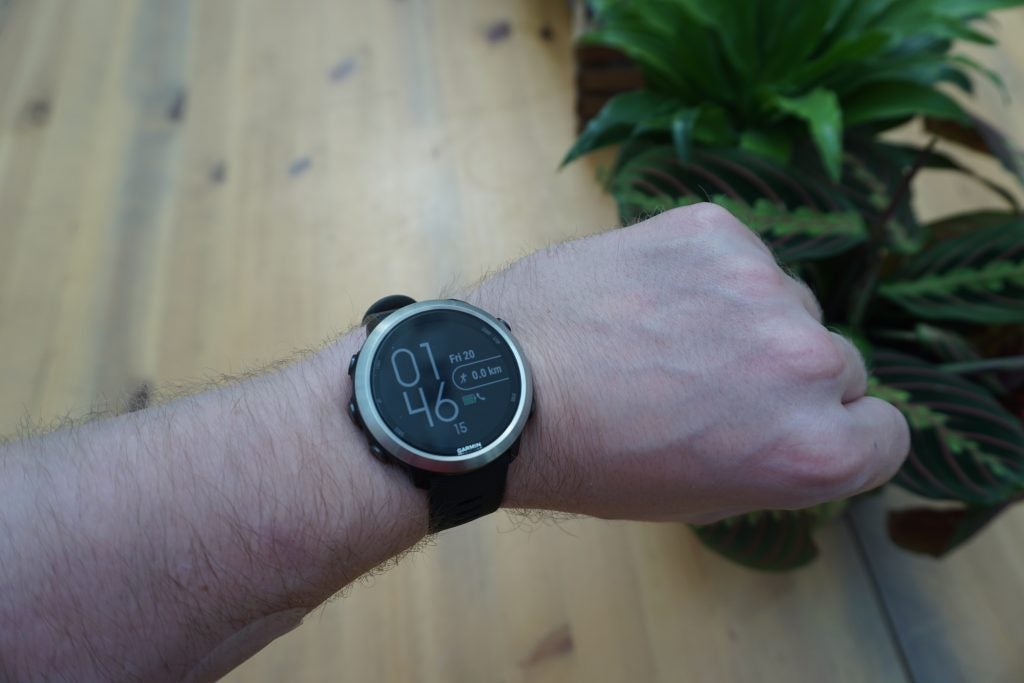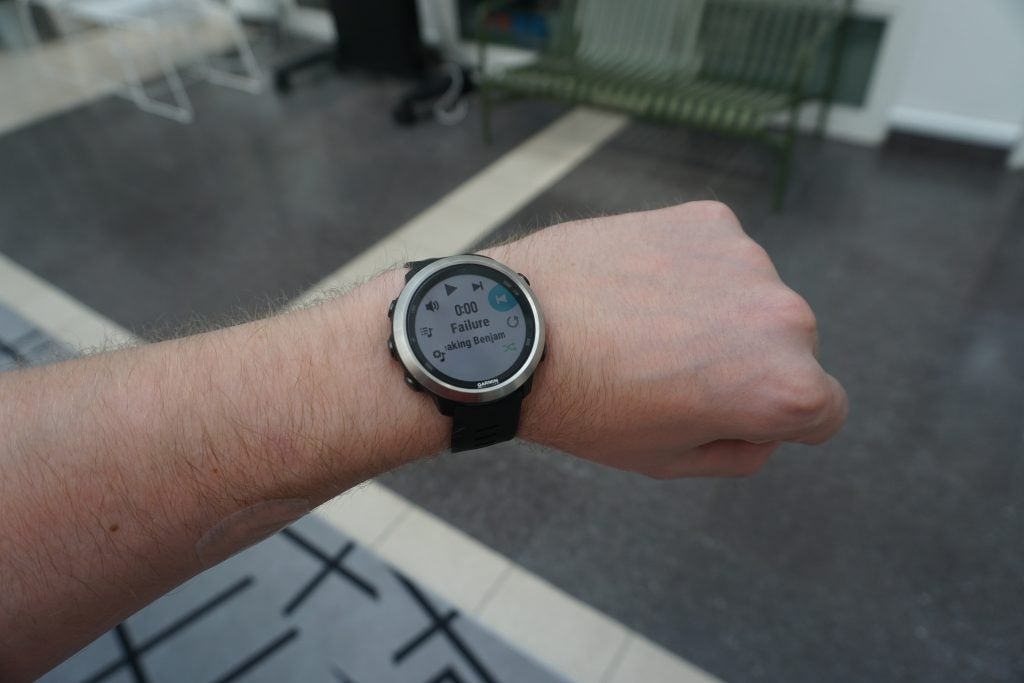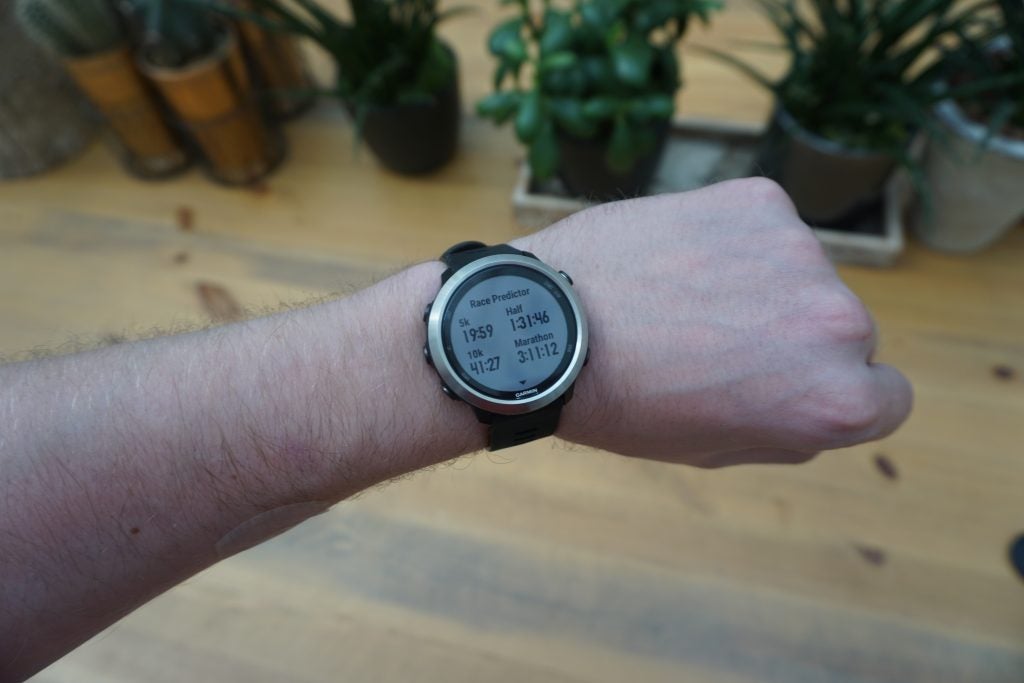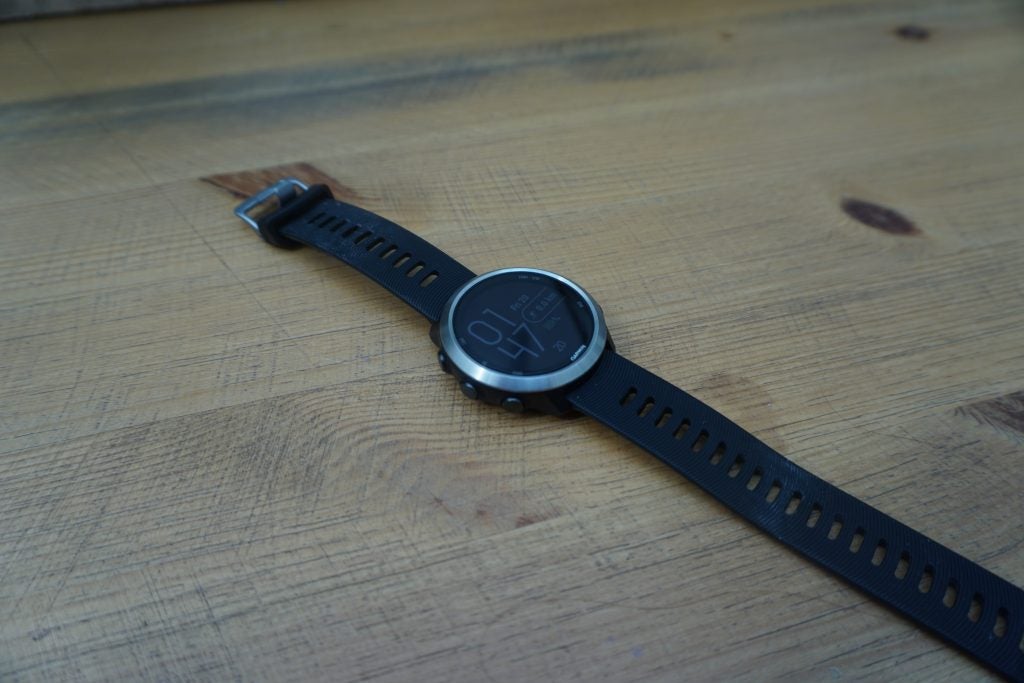Garmin Forerunner 645 Music Review
Garmin Forerunner 645 Music Review
A great fitness watch with music smarts
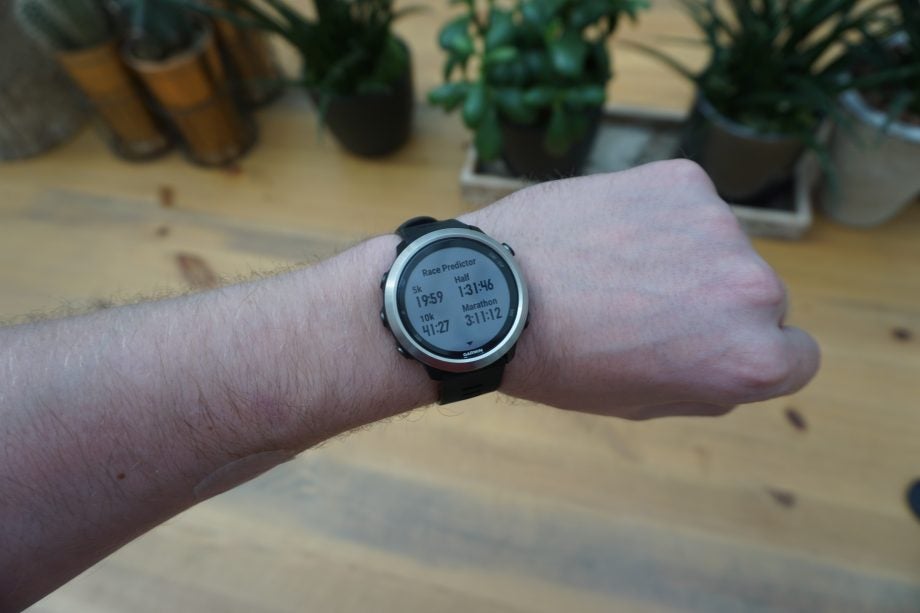
Verdict
Pros
- Local music playback
- Indestructable design
- Comfortable fit
- Excellent multi-sport tracking
Cons
- Doesn't support common streaming services
- Below-average battery
Key Specifications
- Review Price: £399.99
- GPS & GLONASS
- Heart rate monitor
- Garmin Pay
- Onboard music storage
- Deezer+ offline playlists
What is the Garmin Forerunner 645 Music?
If you’re a fitness fanatic who enjoys an accompanying soundtrack to your workout, the Garmin Forerunner 645 Music could well be the wearable you’re looking for.
It’s Garmin’s answer to TomTom’s lineup of music-playing fitness trackers, allowing you to listen to your favourite tracks while working out, without the need to tether your wrist-bling to a smartphone. Coupled with its top-notch fitness tracking features, this is one of Garmin’s most appealing GPS watches for semi-serious athletes in some time.
However, it’s music-playing capabilities are limited compared to most smartwatches in the same price bracket. As a result, more casual gym-goers who rely on streaming services such as Spotify would do better to consider a smartwatch such as the Apple Watch Series 3 instead.
Related: Best running watch
Garmin Forerunner 645 Music – Design
From a distance, the 645 Music is a pretty by the numbers fitness tracker that’s all but identical to the regular Forerunner 645. It features the same circular main body, and the colour remains identical too. Like the regular 645, the only obvious design flourish is the metallic, stainless steel bezel running round the 1.2-inch 240 x 240, non-touch colour screen.
The Forerunner 645 Music is the first wearable from Garmin to offer users local music playback. Specifically, when paired with a set of Bluetooth headphones, the 645 Music will be able to store and play up to 4GB’s worth of local music.
Garmin isn’t the first in this market to offer this, but it’s nevertheless a great step forward that means avid runners and gym-goers can enjoy a workout soundtrack without needing to lug their smartphone around. However, a few flies in the ointment and feature omissions hinder the music player’s overall appeal.
The biggest of these is the lack of support for any third-party music-streaming services. Unlike the Apple Watch, or many competing smartwatches with local storage, the 645 Music doesn’t let you stream or cache songs from services such as Spotify. Deezer support is promised; it wasn’t active at the time of review.
This might not be too much of an issue for a golden oldie like me, who grew up buying music on CDs and then ripping the files onto a NAS, but for most people who primarily use subscription-based services it will prove a pain.
It’s even more annoying once you learn that Garmin is charging an extra £50 for the enhanced Music version of the 645. Not only that, but the “Garmin Express” software it instructs you to use for transferring files is outright dire and prone to crashing. Attempting to transfer files to the Garmin via the app came to a halt mid-transfer every other time I attempted to add music.
Luckily, it is possible to add music to the device simply by dragging and dropping files with the 645 Music connected to a PC – although Garmin doesn’t make this clear in its instructions.
The lack of support for subscription services is a shame, as once you manage to actually transfer files, the music player works a treat. Bluetooth connectivity is excellent, and aside from super-busy areas ripe with interference, I didn’t experience any dropouts, regardless of which set of headphones I used.
Related: Best smartwatches
Some may feel the lack of other significant changes makes the 645 Music feel a little on the dull side, but I remain a big fan of the unassuming design and feature set. Like other Forerunner devices, the 645 is wonderfully comfortable to wear. This is helped by it weighing only 42.2g and being only 13.5mm thick.
The screen isn’t as sharp or vibrant as the Apple Watch’s touch OLED panel, but it’s more than good enough for a tracker. Brightness levels are decent, which means the screen remains visible even outdoors.
Something that may throw general users is the lack of any touch controls. Like all the Forerunner watches, the 645 Music is controlled using a set of physical buttons that sit along the tracker’s sides. Specifically, you’ll find “light” up and down controls on its left side and start/stop buttons on its right. The menu system takes some getting used to, but once you do it will be suitably intuitive for most people.
The lack of touch support is also forgivable given the wearables focus on build quality, which like all the Garmin trackers I’ve tested, is excellent. The 5-ATM rating means it can survive aquatic adventures, and the Gorilla Glass 3 coating around its screen ensures the device will survive the odd bump or scrape. The 645 survived an accidental encounter with a free weight during a gym session crack-free.
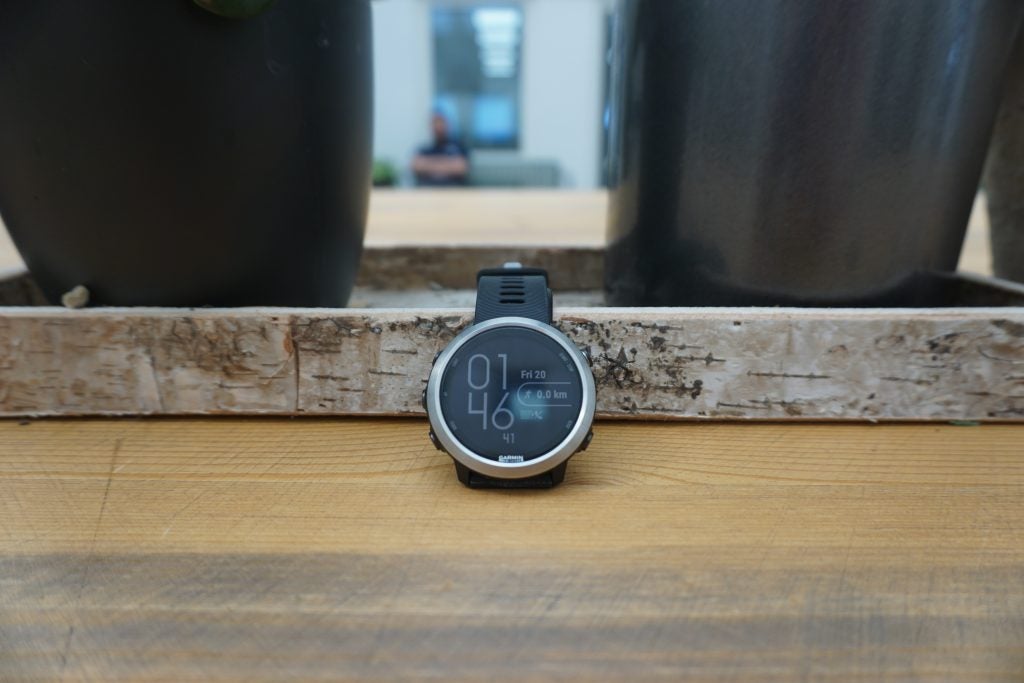
Garmin Forerunner 645 Music – Tracking and software
As a fitness tracker the 645 Music is excellent, and continues Garmin’s record as one of the best in the business.
The company has packed the watch with all the standard sensors you’d expect of a top-end fitness tracker. Highlights include GPS and GLONASS for distance tracking, a Garmin Elevate wrist heart rate monitor, Barometric altimeter, compass, gyroscope, accelerometer and thermometer.
This combination, coupled with the 65 Music’s 5-ATM water-resistance, means that the Forerunner 645 can track all standard sports including running, swimming and cycling out of the box. You can also expand its functionality to track more specific activities such as skiing and snowboarding, although given the constraints I had at the time of testing, I only managed to examine the first three.
As GPS running watches go, like the regular 645, the Music is excellent. Testing the watch across a variety of 5km and 10km tracks I’d mapped around London, I found that distance tracking was accurate and the watch was wonderfully snappy when securing a GPS connection. Generally, the 645 Music secured a GPS lock a good minute faster than the Vivosport and Gear Fit 2 Pro against which I was testing it.
The heart rate monitor is also as good as you’ll get from a wrist-based tracker. Although the figures didn’t quite tally with the dedicated HRM strap or the Jabra Elite Sport I tested it against, the figures were uniform. Unlike some competing trackers, there were no sudden blips that threw my training data out of whack.
However, what really sets the Forerunner apart from similar devices is the way it and the paired mobile app use the collected data to offer training advice and information on your overall progress. Although the app remains one of the least intuitive around, the data on offer is excellent. Scrolling through activity pages, you can dig into your specific lap times, set goals and track long-term progress.
The Garmin’s Training Status feature is a particular highlight. This is one of the preinstalled sub-menus on the watch. It presents various insights, such as your estimated VO2 Max, training load and predicted running times.
Related: Best fitness trackers
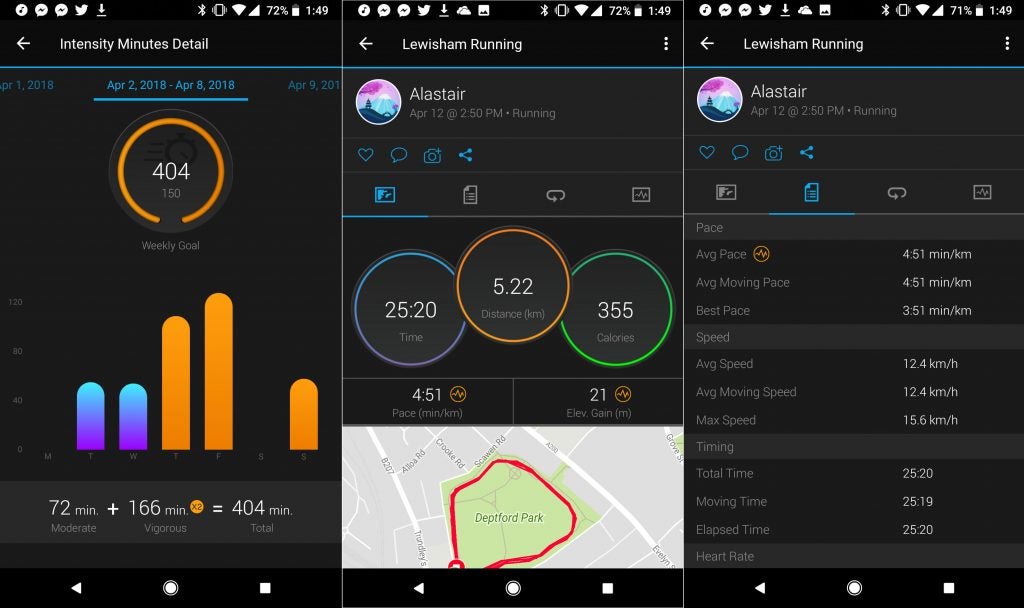
As ever, the VO2 Max figure is at best an estimate that’s only useful as a frame of reference. VO2 Max is a useful metric that measures how much oxygen you can store in your blood; the higher the number, the better your stamina. To get an accurate VO2 Max reading requires you to exercise in close to lab conditions until you physically can’t continue. Testing with the Forerunner, I found its VO2 Max estimates uniform and they gave me a vague sense of progress as a result.
Training load is a more useful metric, which gathers data from all your recent activities to provide a rough estimate of your level of activity over the last 7 days. It also uses your heart rate data to track “intensity minutes – periods where your BPM hugely increased, indicating intense exercise periods where you were burning the most calories – and then recommend rest periods. The combination of factors are a useful incentive to stick to a training regime without overdoing it.
Finally, the estimated “race times” are also a decent motivator to constantly improve. The feature offers an estimate of how long it should take you to complete 5km, 10km, half marathon and marathon runs. The figures are, apparently, an average based on your recent runs, but in general I found them to be slightly optimistic. Trust me, I’m yet to break the 45-minute 10km barrier. Regardless, I found myself regularly working harder mid-run to ensure I at least came close to meeting the estimate.
Notifications are also just as good as ever. When paired with a smartphone (iOS and Android support) you can set the Garmin to push alerts for everything from incoming messages to calendar and weather alerts. The lack of a touchscreen takes a while to get used to, but following a week with the device, I can vouch for the fact that the physical buttons work fine.
Related: What is VO2 Max
Garmin Forerunner 645 Music – Battery
The only serious shortcoming I’ve noticed on the 645 Music, aside of its lack of support for music-streaming services, is its slightly lacklustre battery life.
Garmin quotes the 645 Music as offering up to seven days juice as a basic smartwatch, 14 hours’ music playback and five hours using the GPS. While all those figures are pretty standard for a fitness tracker, with real-world use I found the 645 Music fell short of Garmin’s claims.
I’m yet to get a full week out of the 645 Music with regular use. Regular use entails taking advantage of its smartwatch features throughout the day, using the watch to control my music on the morning and evening commute, and tracking my 30-minute morning workouts. Workouts included a mix of indoor cycling plus three 5km runs each week. In general, the watch managed somewhere between three and five days before dying.
The disparity in figures comes down to my use of GPS and music player. GPS tracking is particularly draining; a 25-minute run with it switched on can drain up to 15% of the 645 Music’s battery. Adding local music playback into the mix that figure went up, and on one 10km run I completed with both features active the watch lost close to a third of its charge.
These figures are okay by smartwatch standards, but well below what I’d expect from a fitness tracker. Past Garmin trackers I’ve tested have managed at least six-to-seven days off a single charge.
Related: Best Fitbits
Why buy the Garmin Forerunner 645 Music?
If you’re a semi-serious athlete hunting hell bent on getting a proper tracker with local music playback, the 645 is a reasonable option. But this is mainly because the fitness market is starved of decent trackers offering local storage. TomTom used to serve those needs, but has discontinued many of its watches that included local music playback.
As it stands, the only other wearables to offer such a feature are more focused on being smartwatches – the Apple Watch Series 3, for example. Their music-playback features are also significantly more developed, offering support for streaming services such as Spotify. As it stands, the 645 Music is limited to local playback, although Deezer support has been confirmed in the near future.
The Forerunner 645 Music’s excellent fitness tracking and near-indestructible design make it a better choice than the Apple Watch for more serious athletes, however.
Verdict
A reliable tracker, offering OK music playback.


